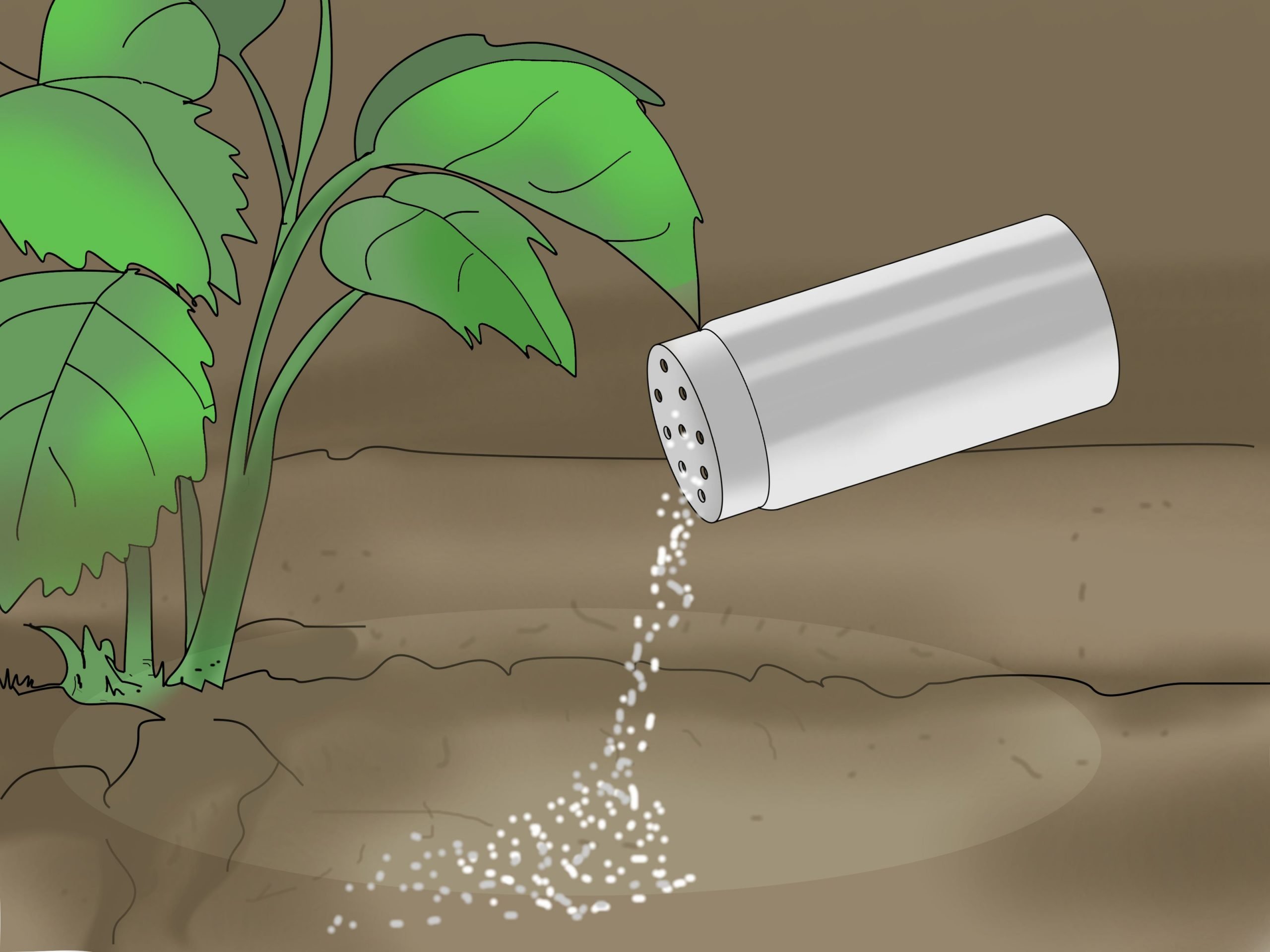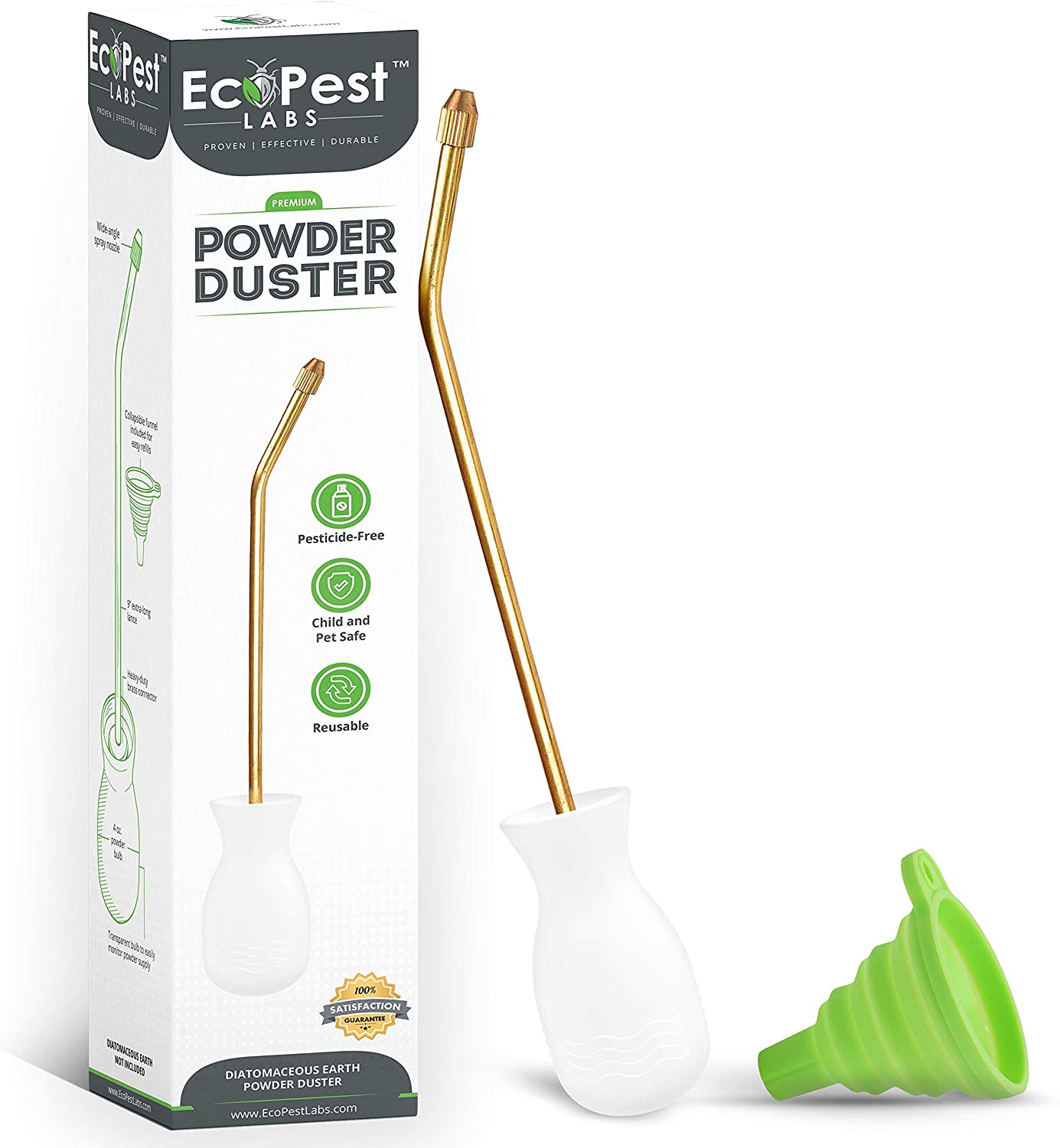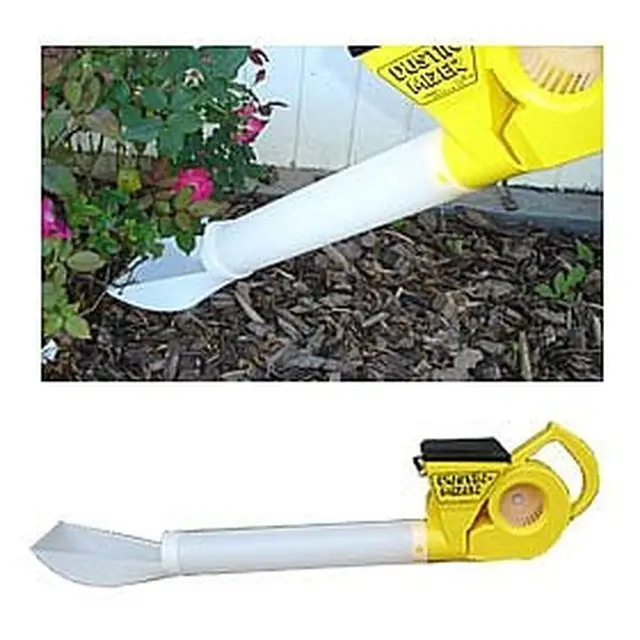How To Use De
- When shopping for DE, look for the “food grade” quality. The DE used in pool filters is not effective against garden pests.
- Sprinkle bands of DE around the plants you are trying to protect. It’s important that the ring of DE does not have any gaps for pests to sneak through.
- If pests are eating the leaves of your plants, you can dust the leaves with DE, which should discourage further damage. However, you should avoid applying DE near the plants’ flowers, where pollinators might inadvertently come into contact with it.
- When using DE, it’s recommended to wear eye protection and a dust mask, as the small particles can be irritating.
- DE works best in dry conditions. It clumps together when wet, so reapply after it rains.
How Do I Treat My Yard With Diatomaceous Earth
If you have fleas, the best natural flea control is Diatomaceous Earth. If youre going to apply this in your yard, you should lightly dust the entire area so that at least a small amount is on the entire part in which your animal will be playing.
Can you put diatomaceous earth on rabbits?
Diatomaceous Earth. There is an online article by a vet, saing that DE is made of miniature sharp particles that can harm the delicate insides of rabbits. I know some pet rescuers who are afraid DE will dehydrate the bunny if you put it on its skin to kill fur mites.
How To Apply Diatomaceous Earth In Your Garden
Every gardener knows that sinking feeling of finding chewed up leaves and half eaten veggies in the garden. One of the best ways to deal with this is to use a diatomaceous earth duster to apply a fine film around your plants. If you want to apply diatomaceous earth directly on your plants consider using food grade diatomaceous earth.
How to Apply Diatomaceous Earth Wet
When using diatomaceous earth outdoors it can also be applied wet. This may seem counter intuitive since its not effective when wet. However when mixed with water and sprayed it can stick to plants and vertical surfaces. Then when it dries its as good as ever. To Apply diatomaceous earth wet simply mix two table spoons of diatomaceous earth to a gallon of water.
After mixing diatomaceous earth with water you will need a hose end sprayer to apply it. These often come with fertlizer packs such a miracle grow. If you do not have one check out the Chapin International hose end sprayer on Amazon.
Out Door Diatomaceous Earth Sprayer
- Fits onto any hose end
- Metering Dial for Fertilizer, Herbicides, and Garden Pesticides
- Built-in Anti-Siphon feature prevents backflow
- Adjustable rate precision dial offers 16 mixing ratios
Use Caution When Applying Diatomaceous Earth
When applying diatomaceous earth indoors or out be careful to not breathe in the dust. Even the dust from food grade diatomaceous earth can cause long term damage to your lungs. Extra attention is needed when applying diatomaceous earth indoors.
Also Check: How Often Can You Fertilize Your Yard
Can You Water After Using Diatomaceous Earth
The easiest way to apply diatomaceous earth wet is to mix the powder with water. The best ratio is mixing four tablespoons of diatomaceous earth with an entire gallon of water until the powder completely disintegrates. The water will then have a somewhat sticky texture but will continue to be a liquid.
Controlling Bed Bugs With Diatomaceous Earth

Bed bugs are a rapidly increasing problem and can be very difficult to manage. This is due in part to their increased resistance to chemical pesticides and their ability to hide in difficult to reach places. Although they can exist alone, theyll most often be found together in larger numbers. Examples of bed bug hideouts are under the box spring, in cracks of the bed frame, the stitching in suitcases, and even inside electrical sockets. Apply DE to passages wherever bed bugs travel. When DE is used with a plant based bed bug spray and strict sanitation measures, control is achieved even more rapidly.
Recommended Reading: How To Get Rid Of Wild Violets In Your Yard
How To Spread Diatomaceous Earth In Your Yard
Made from the fossilized remains of algaelike creatures, diatomaceous earth is a low-toxicity pesticide that controls various species of insects in lawns and gardens, including fleas, spiders, beetles and earwigs. The fossilized remains are ground into a fine powder that contains sharp microscopic edges. As the insects crawl through the powder, the powder absorbs the oils, while the sharp edges tear through their bodies, leading to dehydration and death. For easier application, apply diatomaceous earth with a hand duster.
1
Remove decorations and debris from the yard. Keep children and pets out of the area for about 24 hours.
2
Put on protective eyewear, a dust mask and rubber gloves. Fill a manual hand duster with food-grade natural diatomaceous earth.
3
Stand at one end of the area and turn the hand crank while walking slowly toward the opposite end of the lawn. Keep the nozzle of the hand duster a few inches above the ground. Continue in this manner until you have applied a thin layer of diatomaceous earth over the area.
References
Tips
- Follow the directions printed on the label of the diatomaceous earth.
- Apply diatomaceous earth on a calm, warm day when there is no rain in the forecast.
Warnings
- Only use food-grade diatomaceous earth or a product made for insect control — not the diatomaceous earth used in pool filtration.
Writer Bio
Getting Started Is Easy With These 4 Simple Steps
Diatomaceous Earth is well known as a miracle product with hundreds of uses and today we wanted to highlight how to make a DE slurry suitable for any of your needs. Do you struggle with pesky household insects? Diatomaceous Earth can help. Let’s get started.
As you may have seen in some of our other articles, depending on the situation there are two primary ways to apply Diatomaceous Earth What may have been unclear, are the advantages of using a wet application method, and how it works once you apply it. If you mix DE with water, and spray it onto trees, in your garden, underneath your house, on the ceiling of your patio, DE must dry out before it will kill any bugs.
Read Also: Weekly Lawn Mowing Cost
How To Apply Diatomaceous Earth Tools Check List
Before applying diatomaceous earth make sure you have the right tools on hand and ready to go. Using the list below will help you kill moree bugs with less effort, use less diatomaceous eath, and keep you and your family safe.
- Wear a Mask
- Apply it sparingly
- Keep it away from from pets and kids
Diatomaceous Earth is generally considered a safe and effective way to get rid of ticks and fleas along with many other pests. Since it does not contain any chemicals diatomaceous earth is one of the best natural pest repellents.
Three Types of Diatomaceous Earth
The first thing to know about diatomaceous earth is that there are three types. If you are using diatomaceous earth for pest control use food grade or a brand intended for pest control. Pool grade diatomaceous earth contains crystalline silica. Crystalline silica is extremely dangerous when inhaled so avoid this unless you are using it for a pool filter.
While pool grade diatomaceous earth is extremly dangerous when inhalled even food grade diatomaceous earth can be dangerous if inhaled. The same fine particles that kill insects can damage your lungs, so wear a mask when applying diatomaceous earth.
Now that you have the right type of diatomaceous earth lets discuss how to apply diatomaceous earth indoors.
What Is Diatomaceous Earth And How Is It Made
Also referred to as D.E., Diatomite, or Kieselgur/Kieselguhr, Diatomaceous Earth is a soft, siliceous sedimentary rock that can be crumbled easily into a fine white or cream powder. It derives from the remnants of very small, aquatic organisms that are referred to as diatoms. The skeletons of diatoms are made up of a natural substance known as silica. Silicon, which is an element of silica, usually combines with water and oxygen. The end result of this combination is silicon dioxide.
Diatomaceous Earth is comprised of a particle size that ranges from less than 3 µm to more than 1mm. You will find that most are between 10 to 200 µm. A large amount Diatomaceous Earth is comprised of amorphous silicon dioxide and the first pesticide products that consisted of this silicon dioxide were registered in 1960 in order to exterminate termites and insects.
Read Also: Best Time To Fertilize Lawn In Illinois
How Often Should I Apply Diatomaceous Earth To My Dog
You can rest assured that DE is a safe additive to your pet’s diet. To use as a dewormer, simply add a small amount of food-grade DE to your dog’s diet. Approximately 1 teaspoon to 1 tablespoon of DE should be given daily for a monthâless for very small dogs and cats, more for very large dogs. via
Diatomaceous Earth For Controlling Insect Pests In The Garden
Garden pests are controlled most successfully with DE when the product can be kept dry and out of the way of beneficial insects.
| For bulbs | Just prior to planting, dip and coat entire bulb or existing stem in DE to address any dormant bulb thrips, borer, or mites. |
| In the greenhouse | Sprinkle a perimeter barrier of DE around seeding trays for pill bugs and around the base of small plants to protect against earwigs. |
| In the garden | When plant leaves are dry with a forecast of good weather, dust plants with diatomaceous earth to help control asparagus beetle, Mexican bean beetle, potato beetle and cutworm. |
| For aphids | Dust under the leaves and directly into infestations of aphids on cabbages, broccoli, kale, and cauliflower. |
Avoid putting DE directly on flower heads because bees are especially susceptible to the effects of the dust.
Diatomaceous earth is probably the most overlooked insect pest control available for residential and garden use. Most people have never heard of it, yet it has a longstanding track record for safety and effectiveness. DE is abundant, natural, effective, long-lasting and very inexpensive, with little to no toxicity to the surrounding environment when applied properly. DE should be the first line of defence in everyones pest control arsenal. In many homes, DE may be the only insect pest control measure you may ever need.
Pin for later:
Recommended Reading: Hydroseeding Diy Kit
How Do I Spread Diatomaceous Earth In My Garden
Prevent Tick Mite And Flea Numbers From Growing Too Large

While you can apply diatomaceous earth directly to the fur of your farm animals, there may be times when you want to stop these irritating visitors at the gate, so to speak.
Edges are where ticks and other crawling bugs enter the lawn. Good news is, you dont need dangerous chemicals to stop them.
1 to 4 tablespoons of diatomaceous earth per gallon of water makes for a good spray ration. Use it liberally on your lawn, shrubs or in the garden.
You May Like: How To Dispose Of Riding Lawn Mower
Treat Pets For Hookworm
The first step in getting rid of a hookworm infestation is to kill the intestinal parasites in your pets. Do so by using a dewormer medication containing Pyrantel, such as this dewormer.
Many common dewormers protect against heartworm but will not treat hookworm. Pyrantel pamoate is the best medication for killing all species of hookworms in pets. If the wormer doesnt have Pyrantel, its not likely to cure hookworm. Consult with your veterinarian on a hookworm treatment program for your pet.
Your Experience With Diatomaceous Earth
Have you used Diatomaceous Earth to eliminate bugs around your home, garden or business? Was it a successful treatment? Tell us about it or ask your questions about Diatomaceous Earth when you visit . If you have specific questions about DE before you buy or while applying it, reach out to our dedicated Consumer Care Team at 855-7-ORGANIC.
Also consider signing up for a subscription to the Safer® Brand E-Newsletter, which offers helpful articles like this and helpful information about your purchases at saferbrand.com.
EPA Directive on Food-Grade Diatomaceous Earth
When using desiccants to control bed bugs it is critical to use those that are registered by EPA and labeled for bed bug control. Desiccants that are intended for other uses, such as food-grade or for use in swimming pools, pose an increased inhalation risk to people. Learn more here:
More Like This
Don’t Miss: First Zero Turn Lawn Mower
How Do You Use Diatomaceous Earth For Ants Indoors
The easiest way to use diatomaceous earth to kill ants is to sprinkle it directly on the area where ants have invaded. If youre dealing with indoor ants, line their ant trail and spread the powder along baseboards, floors, window sills, wall cracks and other small areas where ants may have gained entry into your home.
Feed It To Chickens And Other Farm Animals
Besides the fact that diatomaceous earth treats all sorts of intestinal parasites, it is also beneficial to feed DE to your chickens for other reasons. Studies show it can lead to larger eggs, containing more albumen, as well as larger, healthier ladies.
Goats with lice will benefit from a good douse every now and again, just as pigs are at an advantage consuming it as a dewormer.
Recommended Reading: Wild Violet Control In Turf
How To Create A Diatomaceous Earth Spray
For a broad and even application of diatomaceous earth, consider making a wet DE spray. Mixing DE with water makes it easier to treat a larger surface area. For instance, to coat an entire shrub, large tree trunk, or pathways and structures. Again, the DE wont be effective until the water evaporates and the DE dries out. Then, the surface will be left with a fine coating of DE powder.
- Combine 4 to 6 tablespoons of DE per gallon of water.
- Mix in a spray bottle or garden pump sprayer. Shake vigorously to thoroughly combine.
- Spray on leaves or the target surface until it is wetted but not heavily dripping off. Focus on the most pest-prone areas, including the underside of leaves.
- The DE powder may try to separate from the water, so shake your sprayer occasionally during application.
- Allow the solution to dry and begin to work.
When it comes to a widespread infestation of aphids, mealybugs, spider mites or other soft-bodied insects on a plant, we prefer to use a DIY soap insect spray over DE.
What Should I Do If I Spread Diatomaceous Earth On My Lawn
Put on your breathing mask, your eye goggles and your gloves. Pump up the dust spreader as per the manufacturers instructions and pull the trigger. Keep children and animals off of the lawn for 24 hours. After one full day, sprinkle the yard to dampen the white powder. It is now safe for children and pets to return to the lawn.
Read Also: Astroturf Yard Cost
Using Diatomaceous Earth To Control Insects In The Home
With any pest management situation, its important to know the behaviour and habitat of the insect youre trying to control. Before applying DE, gather a little background information.
For the best results:
What Can Diatomaceous Earth Dust Be Used For

When sprinkled over lawns and gardens, diatomaceous earth powder will repel and control many types of pests, including ticks, fleas, slugs, ants, termites, grasshoppers, lawn grubs and many more. Remove and prevent unwanted pests from inhabiting the lawn with diatomaceous earth. Apply the dust on a calm day.
Don’t Miss: How To Kill Wild Violets In Your Lawn
How Often Should I Apply Diatomaceous Earth To My Yard
To keep protecting your plants even up to the day before harvest reapply it after every rain and after periods of high humidity. Dry DE is sprinkled on the ground around plants in a thin layer or applied to foliage with a duster, a tool that provides puffs of air to force the product out in a thin layer.
Diatomaceous Earth For Pets
DE can be used as a non-toxic flea and tick repellent for dogs and cats. Gently apply it to the animals fur, bedding and any other places they may spend a lot of time. It is best to use it minimally, to avoid creating a dust cloud, and reapply it as necessary after a bath or a swim in the lake.
Dogs can also benefit from having diatomaceous earth mixed into their food for a healthier coat, better appetite and improved digestion.
Recommended Reading: Peat Moss Growing Grass
